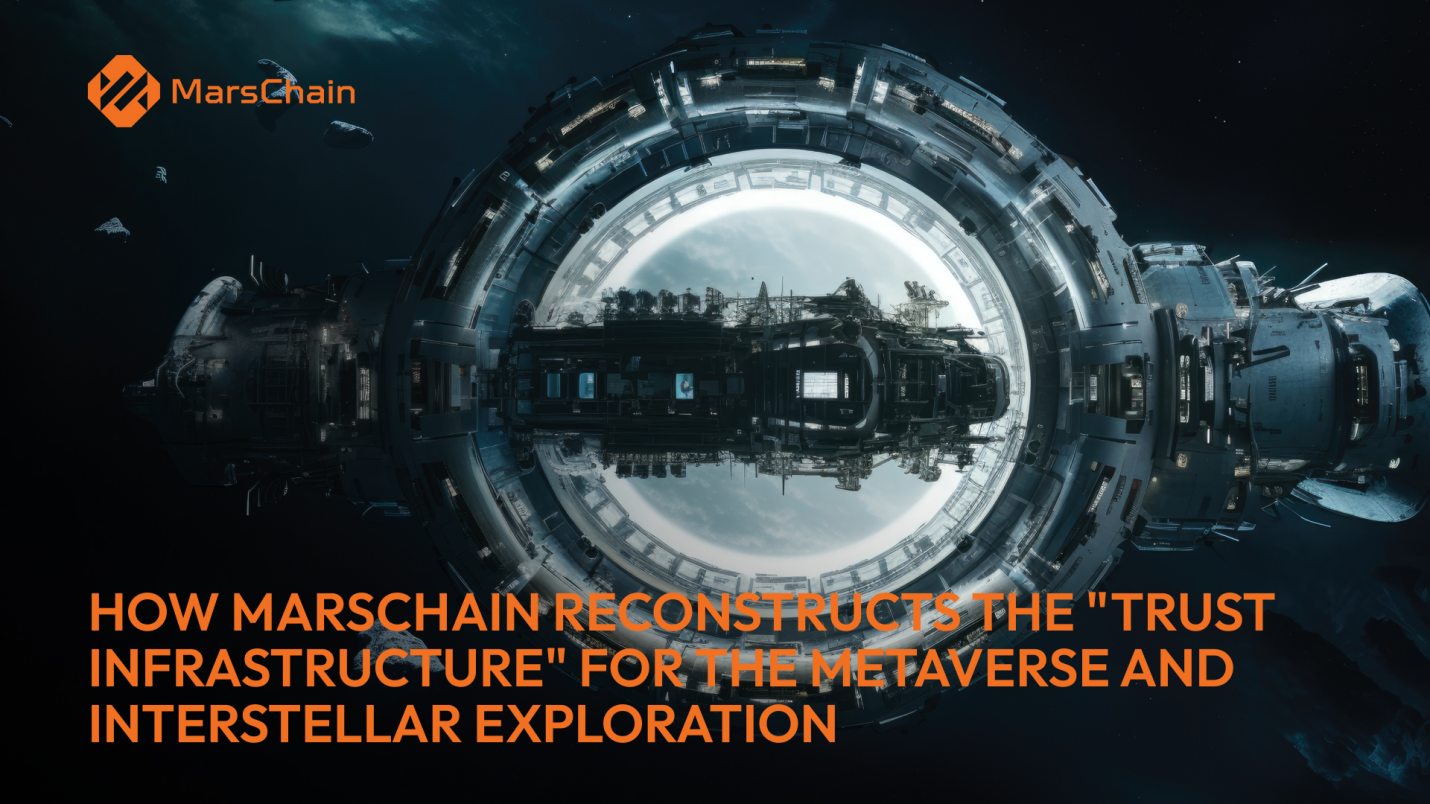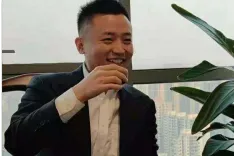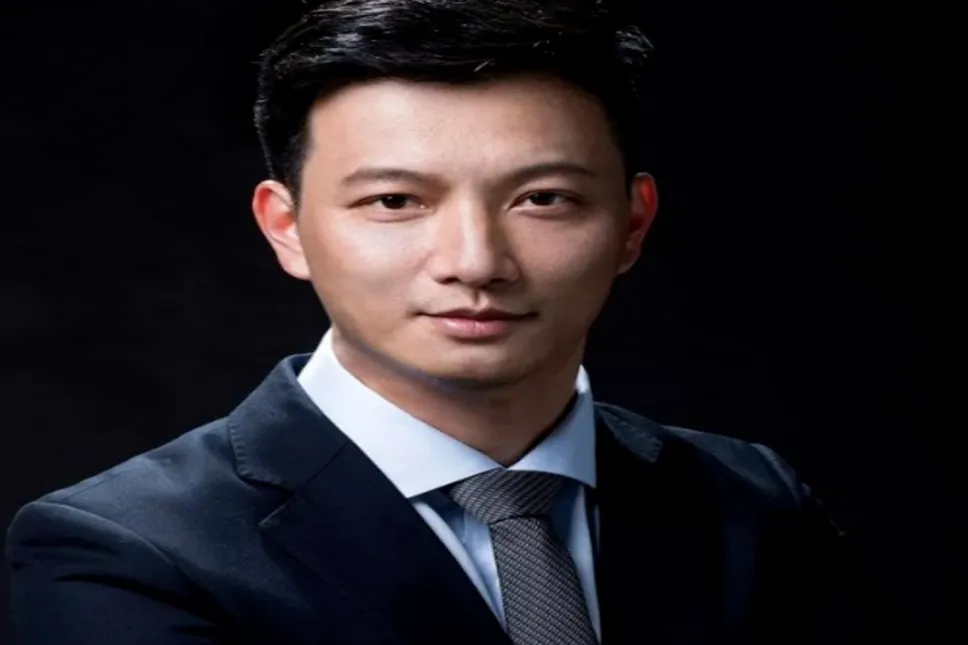
在元宇宙的虚拟领域和星际探索的真实旅程中,“信任”始终是技术突破与场景实施之间的核心障碍。关于虚拟资产所有权的争议(例如,由于平台崩溃导致数字收藏品失效)、跨生态系统数据的孤岛效应(用户身份和道具无法跨平台转移)、星际合作中的信息黑箱(跨国团队对资源数据的可信度产生怀疑)以及虚拟价值与现实世界之间的脱节(数字资产缺乏物理锚定)共同限制了这两个领域的深入融合。
作为一个专注于元宇宙和火星探索的第二层公链,MarsChain的创新并没有停留在“高吞吐量”的技术表面。相反,通过第二层架构、跨链协议、社区共建和生态协作,构建了一个专门为“虚拟-现实融合场景”设计的信任基础设施。该系统不仅解决了传统区块链的效率瓶颈,还从五个维度重新定义了元宇宙和星际探索的信任逻辑:资产所有权确认的不可变性、跨生态系统协作的顺畅性、虚拟-现实价值的锚定、星际数据的可信度以及社区共识的凝聚力,为这两个领域的协同发展奠定了坚实的“信任基础”。
一、元宇宙中的信任痛点:从虚拟资产所有权确认到虚拟-现实价值锚定
当前的元宇宙平台普遍面临三大信任问题:虚拟资产所有权模糊(例如,由于某个平台的集中运营调整导致虚拟土地所有权失效)、跨平台数据碎片化(用户在平台A上的虚拟身份无法迁移到平台B)以及虚拟资产与现实世界价值之间的脱节(虚拟物品缺乏现实价值的支持)。MarsChain的第二层技术通过三层设计打破了这些障碍:
智能合约与链上存证:虚拟资产的“不可变身份证”
MarsChain采用结合了乐观汇总(Optimistic Rollups)和零知识汇总(ZK-Rollups)的第二层解决方案,通过智能合约自动记录虚拟资产(如MetaMars中的虚拟火星土地和NFT矿产)的所有权信息在链上。用户可以通过MarsChain浏览器(https://explorer.mars-chain.io/)查询实时资产流动记录,而无需依赖平台的背书——从铸造到交易的每一个操作都是可追溯的。这种“链上存证”机制完全解决了虚拟资产“在平台崩溃时变得毫无价值”的风险。例如,用户在MetaMars购买的虚拟矿山NFT的所有权信息将永久记录在MarsChain上。即使平台迭代,该资产也可以通过跨链协议迁移到其他生态系统。
跨链协议:打破元宇宙的“信任孤岛”
传统的元宇宙平台由于底层链技术的差异而形成“数据孤岛”——用户在MarsVerse中的虚拟道具无法在其他平台上使用。MarsChain的跨链协议通过标准化接口实现不同元宇宙生态系统之间资产和数据的互通。例如,用户在NEO FANTASY获得的“火星冒险NFT”可以通过MarsChain的跨链桥无缝转移到MetaMars,并自动触发智能合约以完成身份权限同步。这种“跨生态系统信任”不仅改善了用户体验,还使虚拟资产的流动性突破了单一平台的限制,形成了全球价值网络。
RWA代币化:虚拟资产的“现实世界价值锚”
MarsChain的创新在于将虚拟资产与现实世界的火星探索资源绑定,通过RWA(现实世界资产代币化)机制实现“虚拟持有 - 真实收益”的闭环。例如,用户在MarsVerse购买的“虚拟火星矿山NFT”可以与某真实航天企业的火星矿产勘探权相链接——当该企业的勘探项目产生利润时,NFT持有者可以通过智能合约自动获得分红。这一设计解决了传统RWA代币化的两个主要痛点:
● 流动性瓶颈:第二层的低交易成本(单笔交易费用仅为以太坊主网的1/50)降低了小用户的参与门槛,使普通用户能够在没有大量资金的情况下投资于与火星相关的资产;
● 可信度问题:资产评估报告和利润分配规则等关键信息通过MarsChain浏览器公开存证,允许用户随时验证,避免集中机构的黑箱操作。
二、星际探索的信任基础设施:从数据可信度到透明的多方协作
在未来的火星探索国际合作中,“数据真实性”和“资源分配透明度”将是核心挑战。各国的科研团队如何确保矿产开采记录不被篡改?跨国机构如何公平分配火星基地的运营资源?MarsChain的第二层技术提供了去中心化的解决方案:
星际探索中的信任闭环:从数据存证到去中心化协作
MarsChain通过第二层技术和治理创新构建了一个全流程的信任系统,以支持跨国合作的星际探索。一方面,其链上数据存证机制通过第二层将火星探索的关键信息(如矿产开采量、基地能耗、设备维护记录)记录在链上,并结合零知识证明(ZK-Proof)技术,实现“敏感信息保护”和“数据可验证性”之间的平衡。例如,某国际科研团队提交的“火星水资源勘探报告”通过MarsChain的智能合约加密并存储在链上。其他参与者可以通过验证节点确认数据的完整性,避免技术参数泄露和数据篡改的风险。此外,针对火星资源分配的争议,
MarsChain的DAO治理机制实现了多方协作的透明性:持有MarsC代币的社区成员(包括科研机构、企业和普通用户)可以对“火星资源开发计划”进行投票。例如,某国提出的“火星基地能源分配计划”需要获得超过60%的代币持有者支持才能生效,投票过程和结果通过MarsChain浏览器完全公开。这种“技术存证 + 去中心化决策”的结合不仅解决了星际合作中的信息不对称问题,还避免了单一国家或机构的权力垄断,为未来星际社会的公平合作奠定了不可更改的信任基础。
三、超越传统第二层:从“效率工具”到“信任生态系统”
除了依赖技术透明性——通过浏览器建立“信任基础”,MarsChain还通过“社区共建者联盟”模式进一步将用户从单纯的平台用户转变为信任生态系统的核心参与者,建立了从教育赋能到激励驱动和结果反馈的完整信任培养体系。在教育方面,该项目每月定期举办覆盖120个国家的多语言商学院课程,内容包括基础区块链知识和对MarsChain技术架构及投资逻辑的深入分析。通过降低用户的学习门槛,全球用户可以理解并参与生态建设,从认知源头建立信任;在激励机制方面,对于社区领导者(如区域节点领导者),该项目使用MarsC代币奖励作为纽带,鼓励他们深化当地市场,推动信任系统的本地化实施。这些领导者不仅是技术和规则的传播者,也是社区信任的守护者,他们的热情直接增强了生态系统的凝聚力;在结果反馈环节,MarsChain通过浏览器实时公开生态进展——无论是新的合作项目、技术迭代细节,还是代币经济的调整,社区成员都能清晰感知生态系统的价值增长。这种“透明反馈”进一步增强了用户对项目的长期信心。
通过这三项措施,MarsChain使每个用户都成为信任生态系统的共建者和受益者,形成“认知 - 参与 - 认可 - 共同创造”的良性循环。最终,形成了一个覆盖100多个国家、拥有20万真实用户的全球社区。MCD代币的持有量和交易量的持续上升更直观地确认了社区对这一信任生态系统的深刻认可。
四、生态协作:信任网络的“乘数效应”
MarsChain的生态协作可以形成高效的“信任网络”,而且还得益于其与M3 DAO的深度整合。作为M3 DAO生态系统的核心第二层公链,MarsChain直接分享M3 DAO在元宇宙和数字资产管理领域的丰富资源和生态积累,这为其打开生态合作的大门提供了天然优势。
作为一个整合了元宇宙、第二层公链和数字资产管理的去中心化自治组织,M3 DAO已建立了覆盖MetaMars(火星主题元宇宙)、MarsVerse(星际殖民虚拟平台)和Rocket(去中心化启动平台)等30多个项目的生态矩阵。
依靠这一成熟的资源网络,MarsChain迅速实现了跨领域项目之间的信任协作:例如,LoserChick的“抓娃娃机游戏NFT”可以在Voopay平台上兑换真实商品,这正是得益于M3 DAO的内部资产流通协议和MarsChain的链上存证能力,使得交易记录在整个过程中都可以通过MarsChain浏览器追溯;当Rocket作为启动平台为新项目提供发行服务时,不仅依赖MarsChain的第二层技术确保低成本融资,还利用M3 DAO的社区资源完成早期用户的冷启动。其融资数据实时记录在链上以便监督的机制也源于M3 DAO对“透明治理”的生态共识。
这一依赖M3 DAO资源的协作模式使MarsChain避免了从零开始建立生态信任。相反,通过“生态内部互信”的乘数效应,大大降低了项目之间的合作成本——从技术适配到用户认知,从资产流通到规则共识,所有这些都可以基于M3 DAO的现有基础快速实施。最终,信任的价值从单一的技术层面扩展到整个应用层,使MarsChain的信任基础设施真正具备跨场景和跨生态系统的辐射能力。
结论:信任基础设施 - 元宇宙和星际文明的“隐形支柱”
随着元宇宙从虚拟概念转向沉浸式体验,星际探索从科幻想象迈向真实旅程,“信任”不再是超越技术的附加需求,而是支撑这两个领域综合发展的核心基础设施。MarsChain的实践揭示了一个关键逻辑:第二层技术的最终价值在于将“信任”从一个抽象概念转化为一个可以通过技术创新和生态协作实施、验证和扩展的具体机制。
从元宇宙中虚拟资产所有权的确认(通过智能合约和跨链协议打破平台壁垒)到虚拟与现实价值的锚定(通过RWA代币化将数字世界与火星资源连接);从星际数据的可信度(通过零知识证明确保敏感信息的安全性和可验证性)到跨国协作的透明性(依靠DAO治理实现资源分配的去中心化共识);从社区共建中的信任培养(通过教育、激励和反馈形成良性循环)到生态协作中的信任辐射(依靠M3 DAO的资源网络实现跨项目互信)——MarsChain正在用区块链的语言为元宇宙和星际文明书写一套可重用的信任规则。
这不仅是技术层面的突破,也是对未来协作模式的深刻预览:当信任可以通过代码固化,通过社区共识增强,并通过跨生态系统网络传递时,元宇宙的虚拟边界将与星际探索的真实领土无缝连接。也许在不久的将来,人类在MetaMars交易的虚拟火星矿藏可以直接与真实星际资源的开发权挂钩;跨国科研团队在MarsChain上共享的探索数据将成为火星基地建设的决策依据。而这一切的起点就是MarsChain构建的“信任基础设施”——它就像一根隐形的支柱,支撑着人类对虚拟和星际未来的无限想象。
免责声明:本文章仅代表作者个人观点,不代表本平台的立场和观点。本文章仅供信息分享,不构成对任何人的任何投资建议。用户与作者之间的任何争议,与本平台无关。如网页中刊载的文章或图片涉及侵权,请提供相关的权利证明和身份证明发送邮件到support@aicoin.com,本平台相关工作人员将会进行核查。



